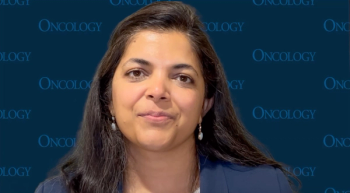
Sequencing Melanoma Treatments: Strategies for Optimizing Patient Outcomes
Panelists discuss how sequencing immunotherapy combinations strategically can maximize patient outcomes, noting that ipilimumab-nivolumab may work well after progression on relatlimab-nivolumab (an approximately 27%-30% response rate), while the reverse sequence is less effective (an approximately 12% response rate).
Episodes in this series

Sequencing Immunotherapy Regimens
Key Discussion Points:
- Strategic sequencing of immunotherapy combinations following progression
- Observed response rates to sequential immunotherapy approaches
- Incorporation of BRAF/MEK inhibition in overall treatment strategy
Key Points for Physicians:
- Salvage ipilimumab/nivolumab after progression on nivolumab/relatlimab appears to yield response rates of approximately 27% to 30%
- The reverse sequence shows lower efficacy—RELATIVITY-020 demonstrated only a 12% response rate to nivolumab/relatlimab after progression on prior PD-1 therapy
- For patients with BRAF mutations, sequencing multiple immunotherapy regimens before using targeted therapy may be beneficial, as response rates to immunotherapy appear to decrease after BRAF/MEK inhibition
Notable Insights:
Treatment sequencing considerations should factor into initial therapy selection. Patients with aggressive disease may benefit from more potent initial therapy (ipilimumab-nivolumab) when there may not be opportunity for sequential therapy lines.
Clinical Significance:
Treatment planning should consider the full spectrum of available therapies and their optimal sequencing, with evidence suggesting superior outcomes when maximizing immunotherapy options before transitioning to targeted therapy for patients with BRAF mutations.
Newsletter
Stay up to date on recent advances in the multidisciplinary approach to cancer.















































































